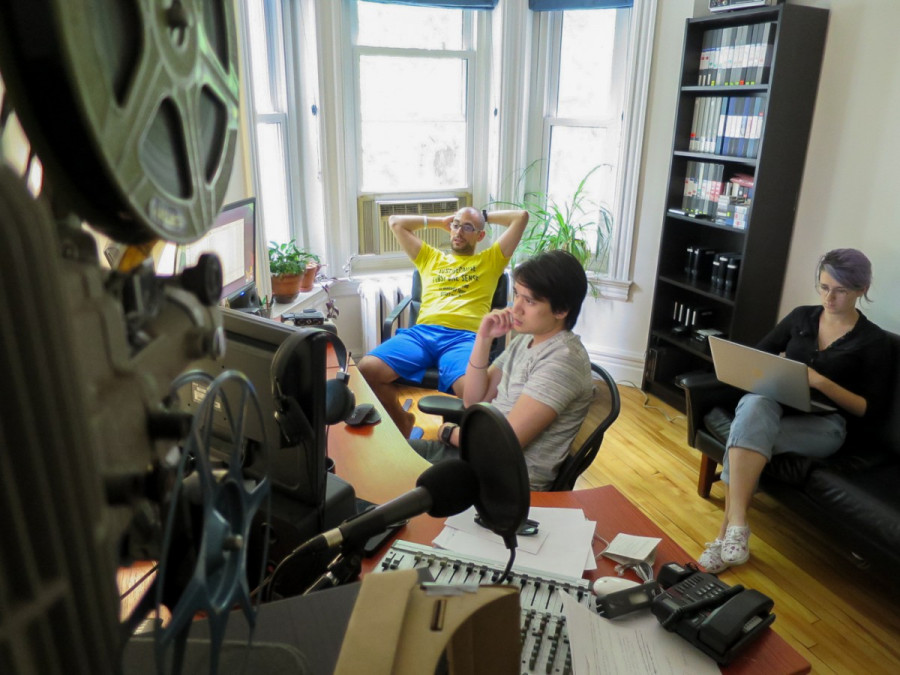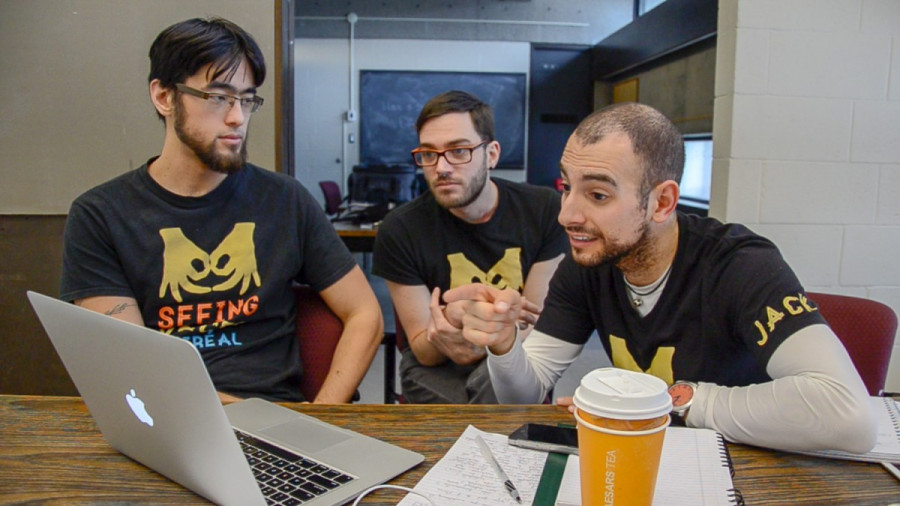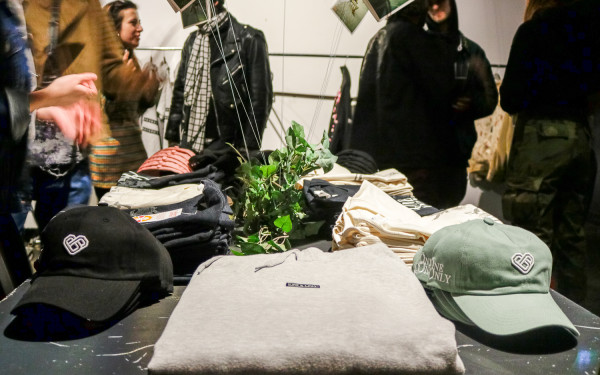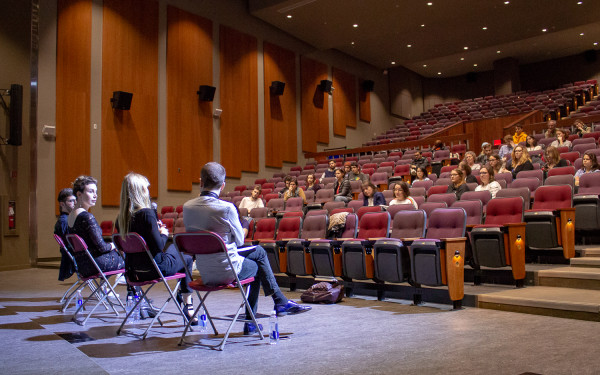Seeing Voices’ Fight For Inclusivity and Representation for the Deaf Community
The Theatre Company Works With Both Hearing and Deaf Actors to Foster Strong Collaboration
In 2011, Aselin Weng found herself taking an American Sign Language class out of interest, falling in love with the beauty of the language and immersing herself in the deaf community.
Her newfound passion had her searching for that same kind of beauty in the performance arts. She quickly came up against a simple, yet frustrating wall.
“I wanted to see deaf theatre but it did not exist back then,” says Weng.
This wall would not stand for long.
Weng, together with her ASL teacher Jack Volpe, a member of the deaf community, began to lay the groundwork for a project, in the hopes that they could make a dent in the lack of representation for deaf performers in the theatre world.
Six years later, their laborious work has paid off⎼⎼that project is a full-blown theatre group called Seeing Voices Montreal. They are making major strides in the battle for inclusivity in the arts.
Seeing Voices’ purpose is not only to put on plays that allow for deaf representation, but to create an artistic environment filled with both hearing and deaf performers. Through art, they are building strong connections between the hearing and deaf communities, without any need for tokenism or neglect for proper representation.
The company’s many projects and workshops are designed to educate people, and to create a space for collaboration. From introductory classes on the language to a new, specialized course designed for parents and babies, Seeing Voices is focused on the idea of a more aware and accessible community.
At the head of things, along with Weng, is Volpe. The company’s director and ASL head instructor had some trepidations when Weng came to him with the idea for Seeing Voices, but ended up playing a major role in growing the company into something he can be proud of.
“I was skeptical at first since she is a hearing person; there is a strong history of cultural appropriation and abuse of our language by hearing people,” explains Volpe, also a graduate of
Concordia’s film production program. “I finally accepted when she proposed the idea that I would be the director and playwright.”
By the time he had completed the script for the company’s first production, “Deaf Snow White”, Volpe came to see Weng as a capable ally. While building their professional relationship, he saw that she wasn’t appropriating the deaf culture, but working to help share its beauty. As he puts it, “The rest is history.”
The work that Volpe and Weng have done together since then has certainly left a strong impression on those who have witnessed their work in action.
“They’re making society more aware that they should be adapting to [deaf people] instead of ignoring them and putting up more barriers,” says Riki Shimoda, a university student who has worked with Seeing Voices in the past. Shimoda credits Weng with getting him involved in theatre at a time when he knew very little about it.
He found himself hooked on theatre and Seeing Voices from the start.
“After [my first piece] I just kept asking them for more stuff to do. So I squeezed my way in,” says Shimoda. “You get really inspired by the language and the culture and you just wanna do more.” He is a strong believer in the power of Seeing Voices’ work.
Though Shimoda does note that these are his opinions as a hearing person and he does not speak on behalf of the deaf community by any means.
A Unique Approach
The company’s unique method is an important one for Weng. According to the executive director, Seeing Voices maintains a close relationship working with the deaf community. They actively engage with the members and teachers of ASL every step they take.
They also maintain a balance of both hearing and deaf executives, promoting their goal of collaboration from top to bottom.
How rare both the work and method of the company are isn’t wasted on some members of the deaf community.
Vanessa Roy-Ferrer is one of these members. She worked with Seeing Voices between 2014 and 2017, even spending time as an executive in the company.
“SVM is unique because it is the only [group] in Quebec that focuses on providing deaf people accessibility to theatres and performances,” says Roy-Ferrer. “They also give workshops which focus on talking about deafness and ASL, and what is acceptable or not to a Deaf person.”

That accessibility often comes in the form of the ASL interpreters that they provide for plays around Montreal, ensuring that the deaf community is not shut out of the city’s theatre world.
For Weng, the battle for for inclusivity is just as important on stage as off.
“Deaf people are so under-represented in every aspect of life. They are under-employed and often under-represented or misrepresented in the media,” says Weng. “We often see hearing actors portraying deaf characters in film or theatre […] deaf actors can’t find jobs and if they don’t get to play deaf roles, when will they ever be on stage?”
As a member of the deaf community, Volpe understands just how much of an effect showcasing deaf talent can have. The company’s work not only creates opportunities for the deaf performers that are hired, but provides deaf audience members with an experience that they may not be used to.
“It is really special when deaf audience members feel connected with the actors on stage, because they share the same bond: being deaf,” says the director.
The company’s casting of both deaf and hearing actors in their plays is an opportunity to show just how successful inclusivity can be in the the arts, according to Weng.
“It shows that a collaboration is possible and that casting habits need to change.”
There certainly is a call out for more inclusivity in the arts, particularly for the deaf community. According to Roy-Ferrer, the arts scene in Montreal has some work to do.
“[A good start would be to] provide a deaf person / someone with a wheelchair, services that they need to be included in the shows, expositions, conferences, rather than assuming what they need. In Montreal, we are very behind,” says Roy-Ferrer, mentioning the heavy lack of knowledge and funding for disabilities in Canada.
Volpe agrees that plenty can be done to improve accessibility, noting that deaf consultants and ASL interpreters should be used when deaf characters or actors are present in a piece. The same goes for providing a better experience for an audience including any members of the deaf community.
“I would also like to see an increase in “open captions” on films so more deaf people can enjoy cinema,” says Volpe. He cites the success of John Krasinski’s film A Quiet Place , which uses ASL and open captioning for a large portion of the film, as proof that such practices can add accessibility without taking anything away from the experience of hearing people.
Despite the issues, Weng does see progress. The success of pieces like the Oscar-winning short film “The Silent Child” and deaf West Theatre’s Broadway production of Spring Awakening are encouraging. Weng sees Canada’s deaf theatre scene headed in the right direction and praises the strong work being done around Canada.
When it comes to her own company’s work, Weng is incredibly proud of the progress that is being made.
“It is absolutely tear-jerking to see the final products of our hard work come to fruition, simply because in Canada it is so rare to find many deaf actors and hearing actors on the same stage,” she says.
While there may be plenty left to do in Seeing Voices’ battle for representation and inclusivity, the company’s founder knows that “every milestone is worth celebrating.”
Those milestones are definitely to be celebrated, but during his time with Seeing Voices, Shimoda also found a great deal of joy in the moments the company creates every day.
He watched the process of deaf and hearing actors learning to work together and saw the work that was able to be produced despite the language barrier.
“When I see a hearing and a deaf person really try to adapt and make that communication work, it’s really fun. When it clicks, it’s fun.”



_600_832_s.png)



